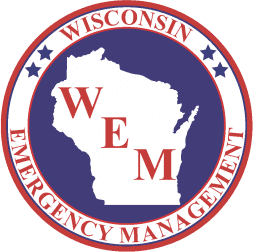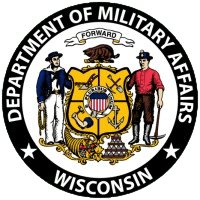MADISON—Gov. Tony Evers today announced a robust $1 billion statewide effort to support COVID-19 testing, contact tracing, acquisition of needed supplies, emergency operations, and resources for local communities throughout Wisconsin.
The effort is funded by $1.17 billion in federal Coronavirus Aid, Relief, and Economic Security (CARES) Act dollars.
Recognizing that testing and contact tracing are essential to Wisconsin’s efforts to contain the spread of the virus, the state has allocated approximately $260 million for testing efforts and $75 million for contact tracing.
“As I’ve said before, regardless of the political overtones of the past week, we still know what we need to do to box in this virus and help keep people safe,” Gov. Evers said. “Our statewide approach to containing the spread of COVID-19 will continue with robust testing and contact tracing efforts in all corners of Wisconsin, resources that ensure our critical workers have the equipment they need to do their jobs safely, and direct investments in local communities and health providers. Wisconsin’s Safer At Home order may have ended, but our all-out war on this virus has not.”
“Our public health experts continue to recommend that folks stay home as much as possible, limit travel, wear a face mask in public, and practice good hygiene,” Gov. Evers continued. “I also urge anyone who needs a test to go get tested at one of our community testing sites and help protect your community and family from this virus.”
Wisconsin’s statewide testing program ensures Wisconsinites can be tested for the COVID-19 virus regardless of location, income or connection to an existing health care system. This $260 million program includes procuring COVID-19 tests and ensuring those tests can be processed quickly and accurately. At the beginning of March 2020, Wisconsin’s lab capacity for COVID-19 tests was at zero. Today, Wisconsin’s testing capacity stands at more than 13,000 tests per day, with 52 active labs to process and analyze these test kits. Wisconsin’s goal for testing capacity is 85,000 tests per week. The cost estimate includes making the 85,000 tests available at no charge to patients and includes the cost of the specimen collection materials, diagnostic services and shipping. To support these efforts, the Wisconsin National Guard is currently operating 25 field testing teams working throughout the state to provide both community and targeted field testing.
The testing program includes:
* COVID-19 test kits: Everyone who needs a test should receive a test. The state’s testing program will spend $202 million to provide COVID-19 test collection kits to Wisconsin hospitals, clinics, nursing homes, local public health departments, and others at no cost to ensure that everyone who needs a test receives a test.
* Local preparedness grants: These grants will provide $30,000 in funding to 96 local and tribal public health departments (for a total of approximately $3 million) to update preparedness plans to ensure Wisconsin communities, schools and businesses are prepared to support testing efforts into the fall.
* Local community and occupational testing pilots: These pilot programs will infuse $45 million in funding to local public health departments, occupational health providers, home health agencies, and health systems to conduct COVID19 testing in congregate, community and occupational settings. This program will incentivize testing by providing eligible providers $35 per COVID-19 test administered to a Wisconsin resident and will run through August 31, 2020.
* Public health testing coordinators: The testing program will provide $10 million in funding to local and tribal public health departments to coordinate local testing efforts.
Hand in hand with Wisconsin’s state COVID-19 testing program is Wisconsin’s statewide contact tracing program. The purpose of this contact tracing program is to conduct interviews with people who test positive for COVID-19 and alert individuals who have been in recent contact with those who have tested positive that they may have been exposed and to counsel them to quarantine during the period they may develop symptoms and get tested if they are symptomatic.
The state’s contact tracing program will pair newly obtained analytics software with the labor of individual state employees to reach out to a COVID-19 patient’s recent contacts. Currently, more than 200 current state employees have been reassigned from typical duties to make these crucial phone calls. In the coming weeks, the state will be hiring additional limited term employees to increase the scale of the contact tracing program.
Of the $75 million, up to $50 million will be available to local and tribal public health departments to hire additional staff to perform disease investigation, contact tracing and monitoring. The remaining funds will go towards technology resources and hiring additional state staff to supplement local efforts to quickly and effectively conduct interviews.
Early on in the COVID-19 outbreak, Wisconsin identified a need for specific kinds and quantities of personal protective equipment (PPE) to protect heath care providers, first responders, and others from contracting COVID-19. The state took early action to procure the types and amounts of PPE needed to provide maximum protection for Wisconsinites. This action ranged from requesting PPE from the strategic national stockpile (SNS) to working with public and private sector partners to identify additional sources of PPE for acquisition. The acquisition of PPE is estimated to cost $150 million. After acquisition, this PPE equipment is distributed to recipients throughout Wisconsin, including health care facilities, first responders, and local governments.
The state has also allocated $40 million towards the procurement of ventilators. Currently, there are only investigational drugs to treat COVID-19, and no vaccine to prevent the virus.
Rather, medical professionals work to provide patients who test positive for COVID-19 supportive care. In some cases, the COVID-19 virus causes such a severe reaction that a patient loses the ability to breathe on their own. In such cases, the patient may be placed on a machine that breathes for the patient, called a ventilator. Being on the ventilator can give the patient additional time to recover from the virus.
Because of the importance of ventilators for COVID-19 patients, Wisconsin has taken steps to increase the quantity of ventilators in the state by purchasing 1,542 additional ventilators.
Wisconsin has also prepared for a possible surge in COVID-19 cases through the construction and operations of an Alternative Care Facility (ACF). To date, in cooperation with the U.S. Army Corps of Engineers and with the support of FEMA, the state has constructed a 530-bed ACF at State Fair Park in Milwaukee County. This ACF will be able to house low-acuity COVID-19 patients should there be a surge in hospitalization rates.
FEMA partnered with the state of Wisconsin for the construction of the Milwaukee ACF. The state is providing the ancillary health services and resources necessary to keep the ACF open for COVID-19 patients in the event of a surge. Those wraparound services include ambulance transport, electronic medical record functionality, and limited laboratory services and limited pharmaceutical supply and services. All health services and resources are provided to COVID-19 patients free of charge.
In addition to the ACF constructed at State Fair Park, the state has also supported the creation of an ACF at the Milwaukee House of Correction. Finally, the state has evaluated and planned for the possible construction of an ACF in Dane County, should an ACF be needed there at a later date. There are also numerous communities throughout Wisconsin that have discussed the potential need to create surge hospital space in the event that we see an increase in COVID-19 patients.
There is a great deal of concern that lifting of the Safer at Home may result in a surge of COVID-19 related patients. Additionally, there is uncertainty regarding the resurgence of COVID-19 in the fall. Approximately $445 million is being allocated to ensure Wisconsin hospital systems and communities are prepared to handle a surge of COVID19 patients over the summer and fall.
In addition to the SEOC programs described above, state agencies across Wisconsin have expended significant funds, approximately $200 million, in support of getting these emergency operations up and running and of providing important resources and assistance to local partners across the state. Additionally, state agencies have incurred direct costs associated with the operational impacts of COVID-19.


